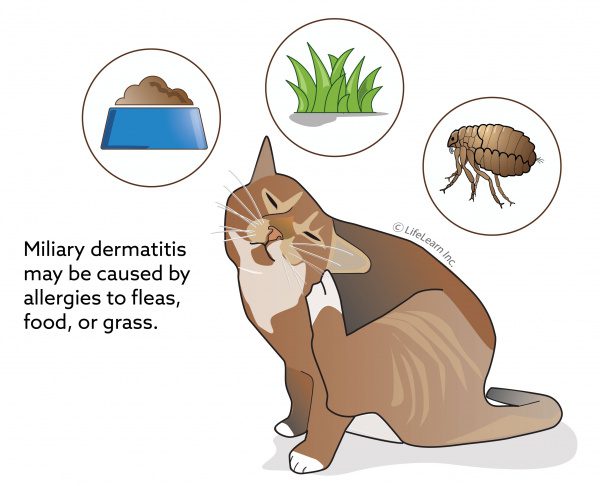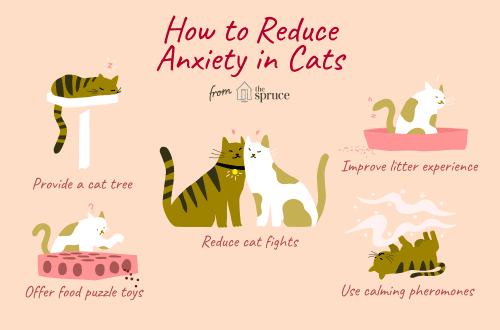
Eczema in cats: symptoms and treatment
Eczema and its causes
Eczema in a cat, or miliary dermatitis, is an inflammatory disease of the superficial layers of the skin, which is accompanied by itching, flaking, ulceration and hair loss. There are three forms of the disease – acute, subacute and chronic, and each of them can be in the form of dry or wet eczema.
Experts distinguish three types of the disease.
- Reflex eczema. It occurs as an allergic reaction to flea or tick bites, cleaning products, medications, and other irritants.
- neurotic eczema. It occurs against the background of stress, with diseases of the nervous system or infection with cat distemper – panleukopenia.
- Post-traumatic eczema. It occurs as a result of injuries and damage to the skin from the bites of blood-sucking insects, scratches, chafing, etc.
Eczema is a fairly common disease, which is more susceptible to long-haired breeds of cats, animals with a weakened immune system and pets with an unstable nervous system.
The following factors can cause the development of the disease:
- allergy;
- bacterial infections, fungal infections;
- skin parasites;
- disorders in the work of the gastrointestinal tract;
- weakened immune system, stress;
- improper nutrition.
Symptoms, diagnosis, treatment and care
The development of the disease proceeds gradually and includes three stages, which are characterized by specific symptoms.
- Erythematous. It is manifested by swelling, redness and itching of the skin area. The cat begins to itch a lot and tries to get rid of itching with the help of active licking.
- Popular. Papules appear on the affected area of the skin. After some time, they form a liquid.
- Vesicular. At this stage, fluid-laden vesicles form on the skin. They can dissolve and dry out – this is dry eczema, or they can burst – this is wet eczema.
An acute form of the disease with a sharp manifestation of symptoms most often affects kittens. Then the disease passes into a subacute form and, without treatment, develops into a chronic one, which is already difficult to treat.
If symptoms occur, it is best to contact a veterinary clinic as soon as possible and in no case try to cope with the disease on your own. Specialists will prescribe the necessary examinations and carry out symptomatic drug treatment, which includes taking antibiotics, antihistamines and antiparasitic drugs.
disease prevention
Nutrition plays an important role in the occurrence of skin diseases – it is important to follow the recommendations of a veterinarian. It is better to give preference to premium food, and also make sure that the pet always has access to fresh water.
At least once every six months, it is necessary to attend preventive measures in the clinic, carry out timely treatment of the cat from helminths and parasites, and follow the vaccination schedule. It will also be useful to monitor the level of stress in the pet.
Any disease is better treated at an early stage, so do not neglect a visit to the veterinarian when the initial symptoms appear. Then, most likely, the fluffy pet will quickly recover and will fully enjoy life again.
See also:
- Caring for Your Cat’s Health with Hill’s Clinically Tested Diet Foods
- How to support the immunity and health of a cat
- The most common cat diseases: symptoms and treatment





